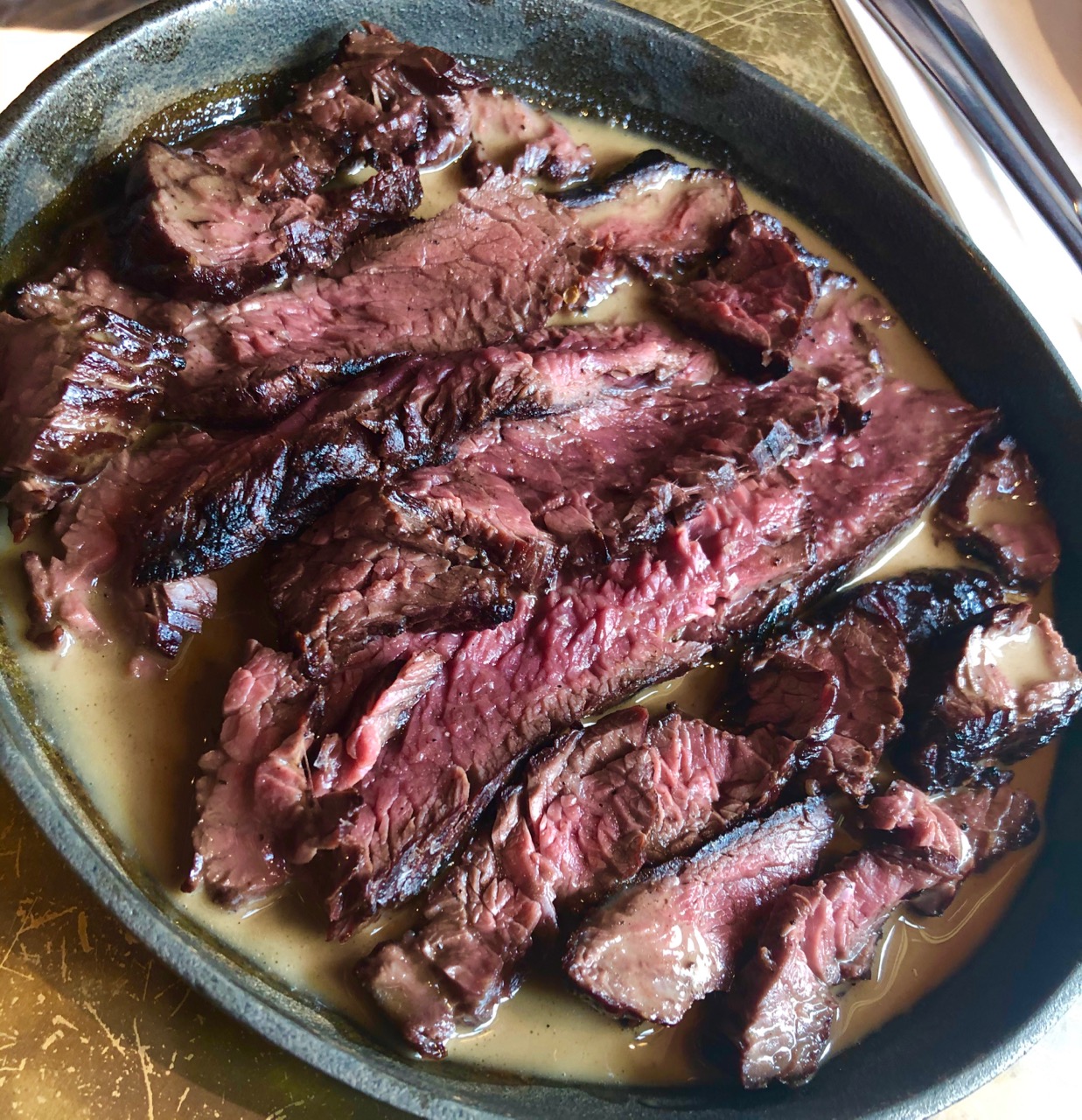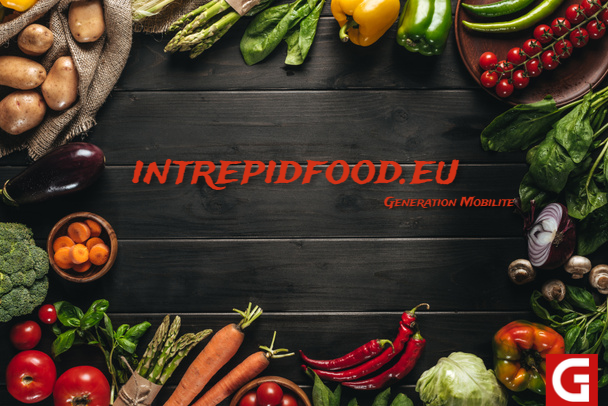FOOD
From Biltong to Nshima: An Introduction to Zambian Meat Dishes

Welcome to a meat lover’s paradise – Zambia! If you’re someone who loves to indulge in delicious meat dishes, then you’ve come to the right place. Zambia boasts a variety of mouth-watering delicacies that will tantalize your taste buds and leave you craving more. From the famous Biltong to the traditional Nshima, there’s no shortage of amazing Zambian meat dishes that will make you fall in love with this country’s cuisine. So, let’s dive inikea klobo sofa
casio edifice efr 547d 1avuef
nike velo
asics gt 1000 green
best water efficient toilets
nike air max grigie e nere
leoparden sandalen
lagan gáz főzőlap
botas estilo dr martens con plataforma
sandali bionatura amazon
texans andre johnson jersey
honor 9 lite vs samsung s6 edge
starbucks 2000 termos
24bottles
adidas formel
to the world of Zambian meat dishes and discover why they are so unique!
Biltong
Biltong is a popular snack and a staple in Zambian cuisine. It’s made by air-drying thin slices of meat, usually beef or game, with salt and spices. The drying process can take up to two weeks, making the biltong moist and tender.
Biltong is not only delicious but also packed with nutrients. It’s high in protein, low in fat, and has zero carbohydrates – perfect for those on a keto diet! You’ll find it sold as both wet (moist) or dry biltong varieties across Zambia.
One interesting fact about Biltong is that it was traditionally used as an easy-to-carry source of sustenance for hunters during long expeditions. Today it has become a beloved snack enjoyed by people from all walks of life.
If you’re new to biltong, give this savory treat a try! Chewy yet flavorful – it’s guaranteed to keep your taste buds satisfied while being healthy at the same time.
Nshima
One of the most popular and traditional dishes in Zambia is called Nshima. This dish consists of a thick porridge made from ground maize, similar to polenta or grits. It is typically served with various types of meat, vegetables, and sauces.
Nshima has been a staple food in Zambia for centuries due to its affordability and filling nature. It is also versatile as it can be eaten by itself or paired with different meats or stews. Many Zambians eat Nshima every day as their main meal.
Preparing Nshima requires patience and skill. Maize flour is mixed with water to form a dough-like consistency which must then be cooked over low heat for several minutes while constantly stirring until it becomes smooth and stiff.
When eating Nshima, it’s tradition to use your right hand to roll the porridge into small balls before dipping them into accompanying side dishes such as stewed beef or chicken, fish or vegetable relish like chibwabwa (pumpkin leaves) mixed with onions & tomatoes etc. sengtoto
Nshima may seem simple but its cultural importance cannot be overlooked in Zambia’s society where many people still rely on this staple food for sustenance today.
Mopane Worms
Mopane worms are a popular delicacy in Zambia and other African countries. These edible caterpillars come from the mopane tree, which is abundant in Southern Africa. They are usually harvested during the rainy season when they fall to the ground after completing their life cycle.
Mopane worms are high in protein and low in fat, making them a healthy snack option for those looking to maintain a balanced diet. They can be prepared by boiling or frying and then served with various side dishes such as nshima or rice.
Despite being considered a delicacy, many people may find the idea of eating worms unappetizing. However, once cooked properly, mopane worms have a nutty flavor that is similar to roasted peanuts.
In Zambia, these insects are not only consumed for their taste but also hold cultural significance as they symbolize fertility and growth. Mopane worm harvesting has also become an important source of income for rural communities that sell them at local markets or export them overseas.
While it may seem unusual to some people outside of Africa, Mopane Worms offer both nutritional value and cultural significance within Zambian cuisine.
Kavungu
Kavungu, also known as kapenta, is a popular type of fish found in the freshwater bodies of Zambia. This small, silver-colored fish is highly nutritious and can be prepared in various ways.
One of the most common methods of preparing Kavungu is by frying it with onions, tomatoes and other spices. It can also be added to stews or soups for an extra burst of flavor.
What makes Kavungu unique is that it is typically dried and smoked before being consumed. This process gives the fish a distinct smoky flavor that pairs well with traditional Zambian dishes like Nshima.
Kavungu can also be enjoyed as a snack on its own or served alongside drinks at social gatherings. Its versatility and delicious taste make it a staple food item in many households across Zambia.
Despite its small size, Kavungu packs a powerful nutritional punch. It’s high in protein, omega-3 fatty acids and essential vitamins and minerals like calcium and iron.
Kavungu may not be well-known outside Zambia but this tasty little fish has become an important part of Zambian cuisine due to its versatility and nutritional benefits.
Chikanda
Chikanda is a traditional Zambian dish made from ground peanuts, sweet potato leaves and wild orchid tubers. It’s also known as African Polony due to its cylindrical shape that resembles a sausage.
The preparation process of Chikanda involves boiling the shredded sweet potato leaves and then mixing them with the ground peanuts and grated tuber. This mixture is then rolled into cylinders or balls before being cooked in hot water for about an hour.
Chikanda has a unique taste and texture that makes it stand out among other Zambian meat dishes. The sweet potatoes give it a slightly sweet taste while the peanuts add some crunchiness to it.
In Zambia, Chikanda is commonly enjoyed as an appetizer or snack by locals who love its distinct flavor. It’s also believed to have some nutritional benefits due to its high protein content which makes it ideal for vegetarians.
Chikanda may not be as popular as Biltong or Nshima but it still remains one of Zambia’s most beloved meat dishes due to its unique taste and cultural significance.
Why Zambian meat dishes are unique
Zambia is a landlocked country in Southern Africa, known for its diverse culture and traditions. One of the most unique aspects of Zambian cuisine is its meat dishes. Unlike many other African countries, Zambia has a variety of meats available to use in their recipes.
Zambian meat dishes are often prepared using traditional methods that have been passed down through generations. They are typically slow-cooked with spices, resulting in tender and flavorful meals.
One explanation for why Zambian meat dishes stand out is because of the country’s agricultural practices. Cattle ranching is a significant industry in Zambia, providing ample access to high-quality beef. Additionally, game hunting is legal and regulated throughout much of the country, allowing for the consumption of exotic meats like crocodile and impala.
Furthermore, Zambian cuisine incorporates both local ingredients such as cassava leaves and international flavors brought by colonists over time into their recipes making them truly unique.
It’s this combination of cultural heritage with fresh local produce that makes Zambian meat dishes so special – not only within Africa but also around the world.
Conclusion
After exploring some of the most unique and delicious Zambian meat dishes, it is clear that this cuisine offers a wealth of flavors and textures that are unlike anything else in the world.
From the savory and chewy biltong to the hearty and filling nshima, there is something for every taste preference. Even adventurous eaters will find themselves pleasantly surprised by dishes like mopane worms or chikanda.
But beyond just being tasty, these meat dishes also offer a glimpse into Zambian culture and history. Many of these recipes have been passed down through generations, reflecting traditional cooking techniques and ingredients.
many Zambian meat dishes utilize locally-sourced ingredients such as cassava leaves or kavungu fruit. This not only makes them more sustainable but also highlights the country’s natural resources.
It is clear that Zambian meat dishes are a must-try for any food lover looking to expand their palate. Whether you are able to travel to Zambia yourself or simply try making one of these recipes at home, you won’t be disappointed by the rich flavors and cultural significance they offer.
FOOD
Maryjays DC Weed Dispensary Juice Bar Washington Reviews: A Unique Cannabis & Wellness Hub

When looking for a high-quality cannabis dispensary in Washington, D.C., Maryjays DC Weed Dispensary Juice Bar stands out as a unique destination. Unlike traditional dispensaries, this establishment combines premium cannabis products with a health-focused juice bar, offering customers a holistic wellness experience. With its convenient location, knowledgeable staff, and diverse product selection, Maryjays has gained popularity among locals and visitors alike.
This article provides an in-depth look at Maryjays DC Weed Dispensary Juice Bar Washington reviews, covering the store’s offerings, customer experiences, legal aspects, and how it compares to other dispensaries in the area.
Store Concept and Offerings
Maryjays DC is not just another cannabis dispensary; it offers a unique blend of cannabis products alongside a fresh juice bar. This combination appeals to both cannabis enthusiasts and health-conscious individuals seeking a refreshing and beneficial experience.
Cannabis Dispensary
Maryjays provides a wide selection of cannabis products, catering to different preferences and needs. Customers can find:
- Strains: Indica, Sativa, and Hybrid strains for relaxation, creativity, or balanced effects.
- Edibles: Gummies, chocolates, baked goods, and more for those who prefer a smoke-free experience.
- Tinctures and Concentrates: Potent options for medical and recreational users.
- Pre-rolls and Vapes: Convenient options for easy consumption.
The dispensary ensures high-quality cannabis by sourcing from reputable growers and suppliers.
Juice Bar
One of the most exciting aspects of Maryjays DC is its juice bar, which focuses on health and wellness. The juice bar serves:
- Fresh, organic juices made from locally sourced ingredients.
- Custom blends to cater to personal preferences and dietary needs.
- Nutrient-rich smoothies for energy and overall well-being.
This combination of cannabis and fresh juices creates a unique environment that prioritizes both relaxation and health benefits.
Customer Experience and Atmosphere
One of the most frequently mentioned highlights in Maryjays DC Weed Dispensary Juice Bar Washington reviews is the welcoming and comfortable environment.
- Friendly and Knowledgeable Staff
Clients frequently compliment the employees on their knowledge and readiness to help. Whether a first-time visitor or an experienced cannabis user, visitors appreciate the guidance provided when selecting products. - Modern and Relaxing Ambiance
The store is designed to create a calm and enjoyable atmosphere. Unlike some dispensaries that feel clinical or uninviting, Maryjays offers a cozy, modern, and well-maintained space, making customers feel at ease. - Efficient and Easy Purchasing Process
The checkout process is streamlined, ensuring minimal wait times. Staff members help customers understand different product options, making the shopping experience smooth and hassle-free.
Reviews and Customer Feedback
When analyzing Maryjays DC Weed Dispensary Juice Bar Washington reviews, the feedback is overwhelmingly positive.
What Customers Love
- High-Quality Products – Many reviewers mention the freshness and potency of the cannabis products, appreciating the consistency in quality.
- Great Customer Service – Staff members are frequently praised for their friendly and professional attitude.
- Unique Concept – The combination of a dispensary and juice bar is a highlight, setting Maryjays apart from competitors.
Areas for Improvement
- Pricing Concerns – Some customers feel the prices could be more competitive compared to other dispensaries in the city.
- Product Availability – On rare occasions, certain popular strains or edibles may be out of stock.
- Wait Times During Peak Hours – Due to the dispensary’s popularity, there may be longer wait times during busy periods.
Overall, the Maryjays DC Weed Dispensary Juice Bar Washington reviews indicate that the business is well-received, with only minor areas that could be improved.
Legal and Safety Considerations
Maryjays DC follows all Washington, D.C., cannabis laws, ensuring a safe and legal shopping experience.
- Age Restrictions – Only individuals 21 years and older can purchase cannabis products.
- ID Verification – Customers must show a valid government-issued ID before making a purchase.
- Purchase Limits – The dispensary follows legal purchase limits to prevent excessive buying.
- Product Safety – All cannabis products meet quality and safety standards, ensuring that customers receive safe, tested products.
The dispensary’s commitment to compliance and safety provides customers with peace of mind when making purchases.
Comparison with Other Dispensaries in D.C.
Maryjays DC stands out from other cannabis dispensaries in Washington, D.C., due to its unique juice bar concept. Here’s how it compares:
| Feature | Maryjays DC | Traditional Dispensaries |
| Product Variety | Cannabis + Fresh Juice | Cannabis Only |
| Health & Wellness | Focus on Holistic Well-being | Limited Health Focus |
| Customer Service | Highly Rated & Personalized | Varies by Dispensary |
| Ambiance | Modern & Relaxing | Standard Dispensary Feel |
For those looking for both cannabis products and a refreshing juice experience, Maryjays DC is an excellent choice compared to traditional dispensaries.
Conclusion
Maryjays DC Weed Dispensary Juice Bar is more than just a place to buy cannabis; it is a wellness destination that combines premium cannabis with fresh, nutrient-rich juices. The Maryjays DC Weed Dispensary Juice Bar Washington reviews highlight the dispensary’s strengths, including high-quality products, excellent customer service, and a welcoming atmosphere.
While some customers mention pricing and wait times as potential downsides, the overall experience is overwhelmingly positive. Whether you are a local resident or a visitor in Washington, D.C., Maryjays DC offers a one-of-a-kind experience worth checking out.
FAQs
What makes Maryjays DC different from other dispensaries?
Maryjays DC uniquely combines a cannabis dispensary with a fresh juice bar, promoting both relaxation and wellness.
Do I need a medical card to buy cannabis at Maryjays DC?
No, Washington, D.C. allows recreational cannabis purchases for adults 21+ with a valid ID.
What types of juices are available at the juice bar?
The juice bar offers fresh, organic, and nutrient-rich juices, with customizable options for health-conscious customers.
Are there any discounts or loyalty programs at Maryjays DC?
Yes, Maryjays offers special deals, discounts, and loyalty rewards for returning customers.
Can I consume cannabis inside the dispensary?
No, public consumption of cannabis is illegal in D.C., and on-site use is not permitted.
FOOD
Discovering Hidden Gems and Tasty Treats on Intrepidfood.eu

Introduction to Intrepidfood.eu
Welcome to a world where culinary delights and travel adventures collide – Intrepidfood.eu! If you have a passion for exploring hidden gems and indulging in authentic cuisine, then this is the ultimate destination for you. Get ready to embark on a journey through Europe’s most tantalizing flavors and unique food experiences. Let’s dive into the delicious world of Intrepidfood.eu together!
Exploring the Hidden Gems of Europe
Europe is a treasure trove of hidden gems waiting to be discovered by adventurous foodies. From quaint villages tucked away in the countryside to bustling markets in vibrant cities, there’s no shortage of culinary delights to uncover.
One might stumble upon a family-run bakery in Provence, France, where generations have been perfecting the art of crafting flaky croissants and buttery pastries. Or perhaps find themselves savoring freshly caught seafood at a seaside taverna on the Greek islands, with the salty sea breeze adding an extra layer of flavor.
Venturing off the beaten path can lead to unexpected encounters with local producers offering up their homemade cheeses or artisanal chocolates. These intimate experiences not only tantalize taste buds but also provide insight into the rich cultural heritage that defines each region.
Exploring Europe’s hidden gems isn’t just about satisfying hunger; it’s about forging connections with communities and immersing oneself in traditions passed down through generations. The journey is as much about discovery as it is about appreciation for the diversity and authenticity found in every bite.
Uncovering Local Delicacies and Authentic Cuisine
Have you ever dreamed of indulging in authentic local delicacies while immersing yourself in a new culture? At Intrepidfood.eu, your culinary adventure begins with uncovering hidden gems of Europe’s diverse food scene.
From the tantalizing street food stalls of Istanbul to the charming cafes tucked away in Barcelona’s alleyways, each bite is a journey through centuries-old traditions and flavors.
Savor every moment as you discover the art of making pasta from scratch in Tuscany or feast on freshly caught seafood along Portugal’s picturesque coastline.
Embark on a gastronomic exploration like never before, where every meal tells a story and every dish reflects the soul of its region. Join us on Intrepidfood.eu to unlock the secrets behind Europe’s most treasured recipes and let your taste buds guide you through an unforgettable culinary experience.
Unique Food Experiences and Travel Adventures on Intrepidfood.eu
Are you ready to embark on a culinary journey like no other? Intrepidfood.eu is your ticket to discovering unique food experiences and travel adventures across Europe.
Picture yourself savoring authentic Italian gelato in a hidden alleyway in Rome, or indulging in a traditional paella cooking class in Valencia. With Intrepidfood.eu, these one-of-a-kind moments are just a click away.
From wine tastings at family-run vineyards to street food tours through bustling markets, the platform offers an array of curated culinary experiences that cater to every taste bud.
Immerse yourself in the local culture as you learn age-old recipes from passionate chefs and mingle with fellow food enthusiasts who share your love for gastronomic delights.
Uncover the secrets of European cuisine and create lasting memories as you dive into the rich tapestry of flavors waiting for you on Intrepidfood.eu.
How to Use Intrepidfood.eu to Plan Your Culinary Journey
Are you a food enthusiast looking to embark on a culinary journey across Europe? Look no further than Intrepidfood.eu, your ultimate guide to discovering hidden gems and tasty treats in the heart of Europe. With its user-friendly interface and comprehensive database, planning your gastronomic adventure has never been easier.
Start by browsing through the website’s extensive collection of local delicacies and authentic cuisine from various European regions. From traditional dishes to modern interpretations, Intrepidfood.eu showcases the diverse flavors that make each destination unique.
Utilize the interactive map feature to pinpoint must-visit restaurants, markets, and food festivals along your route. Filter options based on preferences such as cuisine type or budget to tailor your experience to suit your tastes perfectly.
Take advantage of user-generated reviews and testimonials to gain insights into firsthand experiences shared by fellow travelers. Their recommendations can help you uncover hidden culinary treasures off the beaten path that may not be found in traditional guidebooks.
Whether you’re a seasoned foodie or someone seeking new taste sensations, Intrepidfood.eu is your go-to resource for creating unforgettable food experiences during your travels throughout Europe.
Testimonials and Reviews from Intrepidfood.eu Users
Intrepidfood.eu users have been raving about their culinary adventures on the platform. From discovering hidden gems in small European towns to indulging in local delicacies, the reviews are full of excitement and satisfaction.
One user shared how they stumbled upon a family-owned restaurant serving up traditional dishes that they would have never found without Intrepidfood.eu’s guidance. Another user mentioned the unique food tours offered on the platform, allowing them to immerse themselves in authentic cuisine while exploring new destinations.
The testimonials highlight not only the delicious treats sampled but also the unforgettable experiences created through these food-focused journeys. Users appreciate the detailed information provided on each dining spot, ensuring they can make informed choices based on their preferences and dietary restrictions.
Whether it’s trying out a Michelin-starred restaurant or savoring street food delights, Intrepidfood.eu has become a go-to resource for foodies seeking memorable gastronomic experiences across Europe.
Conclusion: Why Intrepidfood.eu is the Ultimate Resource for Foodies and Travelers
Intrepidfood.eu is not just a website; it’s a gateway to a world of culinary delight and adventure waiting to be explored. With its curated selection of hidden gems, local delicacies, and unique food experiences across Europe, Intrepidfood.eu offers foodies and travelers an unparalleled opportunity to immerse themselves in authentic cuisine and unforgettable travel adventures.
Whether you’re a seasoned traveler looking for your next gastronomic escapade or a food enthusiast eager to discover new flavors, Intrepidfood.eu has something special in store for everyone. From quaint cafes tucked away on cobblestone streets to bustling markets brimming with fresh produce, this platform is the ultimate resource for those seeking out the best that European cuisine has to offer.
So why wait? Embark on your culinary journey today with Intrepidfood.eu and get ready to savor every bite, sip, and moment along the way. Let your taste buds lead you on an unforgettable exploration of Europe’s hidden gems and tasty treats – because when it comes to food and travel, there’s no better companion than Intrepidfood.eu.
FOOD
Top Trends in Kitchen Backsplash Tiles for a Modern Look

The backsplash is an opportunity to add a bold pop of color or a sophisticated pattern. A continuous tile backsplash creates a sleek, sophisticated look that a simple or dramatic countertop can complement.
For a more organic, modern presence, choose handmade or handmade-look tiles. These will have natural variations in texture, color, and thickness.
Slab Backsplash
Backsplashes that extend past the counter to create a solid slab backsplash are a beautiful and modern way to incorporate a custom look into your kitchen. Though this style typically carries a premium price tag, it offers a sophisticated aesthetic that will likely last years.
Slab backsplashes can be made of various materials, including natural stone, glass, and metal. One of the best benefits of this unique option is that it eliminates grout lines and seams, resulting in a cleaner and refined visual appeal.
The dimensionality and depth of a solid slab backsplash create a striking contrast against flat countertops and cabinetry. The combination of a dark backsplash and light countertops is an especially attractive kitchen trend, highlighting the countertop material’s depth while concealing cooking splatters.
Geometric shapes and patterns are a popular kitchen backsplash trend, particularly herringbones. Hexagons are another backsplash shape that never goes out of fashion, and angled tiles add more interest to the overall design of a kitchen.
Natural Stone
Backsplashes are an excellent opportunity to showcase your design style. Whether you’re interested in stylish geometric or floral patterns that are making a comeback, classics like subway tile, or the elegance of natural stone, there is sure to be a backsplash that fits your aesthetic.
Limestone kitchen backsplash tile adds organic texture to a kitchen and adds warmth and character. This limestone backsplash works well with the white kitchen cabinets and wood-paneled island to create a rustic yet elevated kitchen style.
Another option for a natural-looking backsplash is pebble tile, which has a similar look to stacked limestone but offers the added benefit of being much easier to clean. Pebble tile backsplashes can be arranged in a more rough, stacked pattern to fit farmhouses and other rustic design styles or laid flat for a sleeker look. Using different colors of pebbles can help you achieve the desired style. Stones such as marble, slate, and travertine are popular backsplash choices. These natural materials can be expensive, but they bring a luxurious look to your kitchen that impresses guests and families alike.
Picket Tile
Backsplash tiles with a picket-fence aesthetic help to create a classic design that helps to complement various decor styles. Whether your home’s style leans more towards modern, contemporary, mid-century modern, coastal, or traditional, this design element adds timeless elegance to your kitchen.
The backsplash tile color can also help influence the kitchen’s overall feel. Lighter backsplash colors help to enlarge a kitchen’s space, while darker hues can make a room feel cozier.
Use a dark tile to frame an oven or range hood for a striking statement that will catch the eye. For a more neutral backsplash, repeat tones of the cabinetry, wood floors, or granite countertops throughout the space to balance a dark color scheme.
If you prefer a herringbone backsplash but want a unique look, try alternating matte and glossy tiles to create an interesting texture. The herringbone pattern can also work well for a backsplash that isn’t as wide as the entire countertop or range area.
Arabesque Tile
The arabesque backsplash tile trend is sweeping the kitchen design market and brings Moroccan flair to your space. The pattern is curvy and sharp, breaking away from standard subway tiles for a unique look.
Geometric styles are classic for backsplashes, but be bold and try something unexpected. Navy blue sun shapes stand out in this sleek kitchen, and the rounded ends of the arabesque tile add a feminine touch to a masculine-inspired style.
The contrasting grout color helps this backsplash to pop, and the simple white hexagons can be easily replaced with glass or porcelain options for a subtler look. Dark green is another red-hot color that can create a sleek, minimalist backsplash. Use it to highlight a stylish vent hood or to tie the room together with an accent wall that runs floor to ceiling. The arabesque pattern carries a lot of visual movement, so it is best to keep the rest of your backsplash simple or use a different grout color to create a definition.
Colorful Backsplashes
In the grand scheme of kitchen design, choosing a backsplash may not be your biggest decision, but it certainly won’t be the least important. Adds a visual element that can subtly tie the room together or make a bold statement.
A beadboard backsplash keeps this kitchen feeling relaxed and country chic while blending in with the wood counters and open shelving. The backsplash’s neutral coloring matches the wood cabinets and cafe curtains for a seamless aesthetic.
Tiles from recycled glass and salvaged metal can offer a modern and unique take on the classic subway tile. This trend, which combines sustainability and creativity, has been around for a while but is gaining popularity among homeowners.
Another option is to go with a colorful. This is a great way to incorporate the latest trends without doing a full remodel. A back-painted glass backsplash in a carrot orange hue fits this contemporary kitchen beautifully and can be easily replaced. You can also opt for a hand-painted or handmade tile to add character and an artisanal feel to the space.
-

 L,IFESTYLE2 years ago
L,IFESTYLE2 years agoExploring the Heart of Iowa City Downtown District
-

 TECH2 years ago
TECH2 years agoMaximizing Your Pixel 6a’s Wireless Charging Performance: Tips and Tricks
-

 SPORTS3 years ago
SPORTS3 years agoclub america vs deportivo toluca f.c. timeline
-
CRYPTO2 years ago
Features of Liquidity Providers and Differences Between Them
-

 BUSINESS2 years ago
BUSINESS2 years agoThe Evolution of the Patagonia Logo: A Look at the Brand’s Iconic Emblem
-

 TECH3 years ago
TECH3 years agoBuild Your Email Marketing Contact
-

 TECH3 years ago
TECH3 years ago6 Ways AI Will Change the Future of Marketing
-

 HEALTH8 months ago
HEALTH8 months agoProstavive Colibrim: A Natural Prostate Health Supplement









